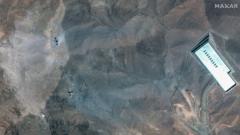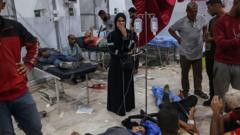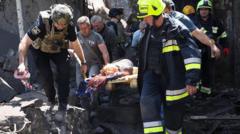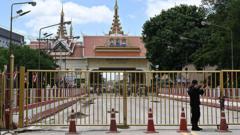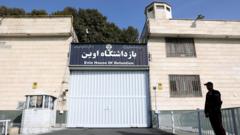Limited food aid entering Gaza has resulted in chaotic scenes, including looting and armed conflicts. Amidst a worsening humanitarian crisis, many residents express despair over the aid distribution process and face severe shortages of essential goods.
Gaza Faces Growing Chaos Amid Food Shortages and Rising Insecurity
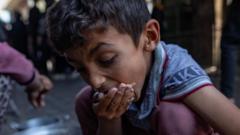
Gaza Faces Growing Chaos Amid Food Shortages and Rising Insecurity
As hunger deepens in Gaza, aid distribution efforts fail to keep up, leading to violent clashes and a humanitarian crisis.
In recent days, Gaza has descended into chaos as food shortages continue to escalate, following a brief easing of the Israeli blockade that allowed some aid to flow into the region. Bakeries attempting to distribute limited food supplies were overwhelmed by desperate crowds, leading to their closure. In a stark illustration of the deteriorating security situation, armed looters ambushed an aid convoy, which resulted in a firefight with Hamas security personnel, subsequently targeted by Israeli drone strikes.
Eyewitness accounts describe distressing scenes as a convoy of 20 trucks, facilitated by the World Food Programme (WFP), was intercepted. The Hamas security detail engaged the attackers but faced deadly retaliation from Israeli drones, raising critical concerns about the safety of humanitarian workers and supplies. Hamas condemned the attack as a "horrific massacre" aimed at undermining efforts to protect aid.
Despite the partial lifting of an 11-week blockade, which has enabled around 130 trucks to deliver food in recent days, the United Nations warns that such quantities are insufficient. It estimates that Gaza requires 500 to 600 trucks per day to meet the needs of its beleaguered population, already grappling with vast displacement and a lack of basic necessities.
Many locals have criticized the WFP's aid distribution strategy, advocating for a shift from ready-made bread distribution to direct flour handouts, enabling families to cook at home, thus minimizing the risk of violence at crowded distribution points.
Reports from the ground reveal a deepening humanitarian catastrophe, as residents face a loss of electricity, clean water, and essential medical care. As military operations ramp up against Hamas, various humanitarian agencies have highlighted the escalating risks to aid deliveries, stressing the need for immediate action to prevent impending famine.
UN Secretary General Antonio Guterres affirmed that while some supplies have crossed into Gaza, the volume remains alarmingly inadequate. He noted that a larger influx of up to 160,000 pallets awaited delivery, sufficient for nearly 9,000 trucks, which is still far from the required support for the 2.1 million residents.
Healthcare workers report alarming cases of malnutrition and untreated medical needs, highlighting the severe impacts of food scarcity on vulnerable populations, particularly women and children. In the shadow of ongoing conflict, the emotional and physical toll on Gazans is evident, as daily life becomes overshadowed by desperation and suffering amid a landscape of destruction.
Eyewitness accounts describe distressing scenes as a convoy of 20 trucks, facilitated by the World Food Programme (WFP), was intercepted. The Hamas security detail engaged the attackers but faced deadly retaliation from Israeli drones, raising critical concerns about the safety of humanitarian workers and supplies. Hamas condemned the attack as a "horrific massacre" aimed at undermining efforts to protect aid.
Despite the partial lifting of an 11-week blockade, which has enabled around 130 trucks to deliver food in recent days, the United Nations warns that such quantities are insufficient. It estimates that Gaza requires 500 to 600 trucks per day to meet the needs of its beleaguered population, already grappling with vast displacement and a lack of basic necessities.
Many locals have criticized the WFP's aid distribution strategy, advocating for a shift from ready-made bread distribution to direct flour handouts, enabling families to cook at home, thus minimizing the risk of violence at crowded distribution points.
Reports from the ground reveal a deepening humanitarian catastrophe, as residents face a loss of electricity, clean water, and essential medical care. As military operations ramp up against Hamas, various humanitarian agencies have highlighted the escalating risks to aid deliveries, stressing the need for immediate action to prevent impending famine.
UN Secretary General Antonio Guterres affirmed that while some supplies have crossed into Gaza, the volume remains alarmingly inadequate. He noted that a larger influx of up to 160,000 pallets awaited delivery, sufficient for nearly 9,000 trucks, which is still far from the required support for the 2.1 million residents.
Healthcare workers report alarming cases of malnutrition and untreated medical needs, highlighting the severe impacts of food scarcity on vulnerable populations, particularly women and children. In the shadow of ongoing conflict, the emotional and physical toll on Gazans is evident, as daily life becomes overshadowed by desperation and suffering amid a landscape of destruction.






